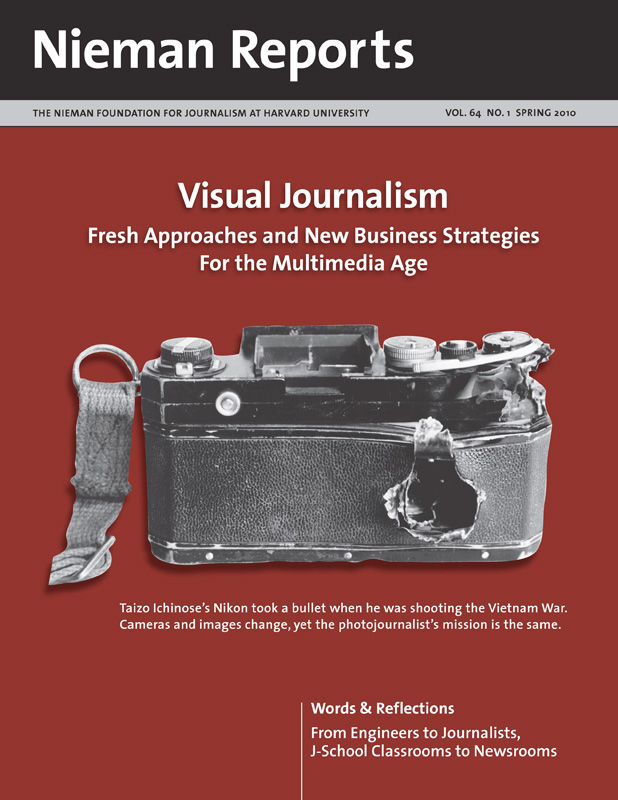
Carlos Perez, who grew up in Guatemala amid poverty, left the evironment of gangs and graduated from an art school in Vienna, Austria where he now lives. Photo by Donna De Cesare.
RELATED ARTICLE
“Pushing Past Technology to Reach Enduring Issues”
-Donna De CesareThe recent launch of the Web site “Destiny’s Children” ends one phase of a two-decade project on youth gangs while it begins another. I began working on “Destiny’s Children” in 2003, in collaboration with Fred Ritchin and graphic artist and Web designer Zohar Nir-Amitin at PixelPress. Our goal: to employ the visual histories of war’s aftermath that my photographs convey in ways that unsettle and inspire viewers. In using photographs I had taken of gang members, I hope to connect minds and hearts with activism.
In the beginning one of our challenges was to create a bilingual project that would work on slow modems in Latin America as well as the new broadband connections beginning to replace dial-up Internet service in New York City and across the United States. Ritchin’s PixelPress solved that problem but the demands of my teaching and new assignments conspired against my ability to advance the project.
Read more about Carlos Perez in Smithsonian magazine.When I was ready to resume, much had changed, not only in the digital landscape but also in the gang world. I traveled back to El Salvador, Guatemala and Honduras this past summer to update my reporting and to take more photographs for the Web project. I needed to do this to place the stories I had followed over a decade—including the tragedy that befell Edgar Bolaños and the triumph that Carlos Perez wrought from adversity—in a historical context and to provide an overview of current efforts to engage with the social and policy issues the stories raise. A former student, Jose Castillo, helped adapt the original design into Flash and WordPress, and he worked with me to find ways to make it accessible for different audiences.
In the next phase I will be partnering with regional and community-based organizations in the United States and Central America to develop educational and activist strategies that will open the Web site to participation by young people.


